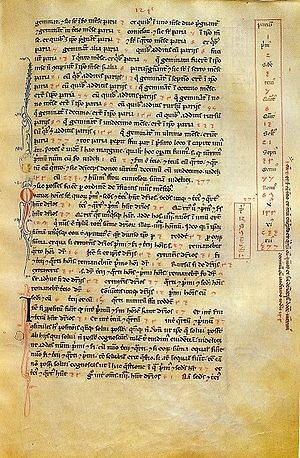Fibonacci FlimFlam
Post on: 16 Март, 2015 No Comment

The Fibonacci Series
Fibonacci. There’s no known
authentic portrait of him.
Leonardo of Pisa (
1170-1250), also known as Fibonacci, wrote books of problems in mathematics, but is best known by laypersons for the sequence of numbers that carries his name:
0, 1, 1, 2, 3, 5, 8, 13, 21, 34, 55, 89, 144, 233, 377, 610, 987, 1597.
This sequence is constructed by choosing the first two numbers (the seeds of the sequence) then assigning the rest by the rule that each number be the sum of the two preceding numbers. This simple rule generates a sequence of numbers having many surprising properties, of which we list but a few:
- Take any three adjacent numbers in the sequence, square the middle number, multiply the first and third numbers. The difference between these two results is always 1.
- Take any four adjacent numbers in the sequence. Multiply the outside ones. Multiply the inside ones. The first product will be either one more or one less than the second.
- The sum of any ten adjacent numbers in the sequence equals 11 times the seventh one of the ten.
The Fibonacci sequence is but one example of many sequences with simple recursion relations.
The Fibonacci sequence obeys the recursion relation P(n) = P(n-1) + P(n-2). In such a sequence the first two values are arbitrarily chosen. They are called the seeds of the sequence. When 0 and 1 are chosen as seeds, or 1 and 1, or 1 and 2, the sequence is called the Fibonacci sequence. The sequence formed from the ratio of adjacent numbers of the Fibonacci sequence converges to a value of 1.6180339887. called phi, whose symbol is or . Sometimes the Greek letter tau, , is used.
A striking feature of this sequence is that the reciprocal of is 0.6180339887. which is — 1. Put another way, = 1/ + 1. This is true whatever two seed integers you use to start the sequence, this result depends only on the recursion relation you use, not the choice of seeds. Therefore there are many different sequences that converge to . They are called generalized Fibonacci sequences.
The ratio = 1.6180339887. is called the golden ratio or golden mean. A rectangle that has sides in this proportion is called the golden rectangle, and it was known to the ancient Greeks. The golden rectangle is the basis for generating a curve known as the golden spiral, a logarithmic spiral that is fairly well-matched to some spirals found in nature, and this fact is the source of much of the popular and mystical interest in this mathematical subject.
Note: Writers on this subject sometimes concentrate on and some on 1/ as the ratio of interest. This is no big deal for when you have a ratio of two values, say A and B, which is a comparison of their sizes, the reciprocal of the ratio A to B is just the ratio of B to A.
It’s easy to invent other interesting recursion relations. Some have been interesting enough to mathematicians that they carry the names of their originators.
The next-best known is one of the Lucas sequences: 1, 3, 4, 7, 11, 18, 29, 47, 76, 123, 199. It has the seed values 1 and 3, and the same recursion relation as the Fibonacci series. The ratio of adjacent values approaches for large values. Other examples of Lucas sequences include the Fibonacci numbers, Mersenne numbers, Pell numbers, Jacobsthal numbers, and a superset of Fermat numbers. See: Lucas Sequence. All are mathematically interesting, so why is it that only the Fibonacci numbers get all the attention from Fibonacci fanatics?
How about a different recursion relation, say P(n) = P(n-2) + P(n-3)? With three seed numbers 0, 1, 1 we get the series 0, 1, 1, 1, 2, 2, 3, 4, 5, 7, 9. The seeds, together with the recursion relation, uniquely define the sequence. The ratio of successive terms P(n+1)/P(n) converges to 1.3247295. whose reciprocal is 0.7545776665.
).push({});













